Live webinar: Cut costs, grow revenue - Transform CX with the new Comm100 AI trifecta ✨
Register nowLive webinar: Cut costs, grow revenue - Transform CX with the new Comm100 AI trifecta ✨
Register nowWe all know that customer service is important, but just how instrumental it is to success of a company might surprise you. A massive 91% of customers agree that a positive customer service experience makes them more likely to make another purchase. What’s more, 90% of Americans use customer service to decide whether or not to do business with a company. Clearly, customer service has become a key differentiator that can attract new business and retain existing customers. With so much to gain, all organizations should focus on ways to improve customer service.
Knowing how to improve customer service starts by understanding what customers want. Today’s customers look for fast, convenient, and personalized support that allows them to connect with brands how, where, and when they want. With this all in mind, this guide will explore customer service from top to bottom, exploring the state of customer service today, revealing best practices, and recommending the best software you can adopt to help your customer service operations become the envy of your competitors.

Today’s customer service expectations are sky-high, and companies need to do more. 99% of customers now believe that companies need to improve their service and support. So what ideas for improving customer service are most popular today?
One of the top customer service trends in recent years has seen customer support expand to new digital channels. Customers have come to expect support wherever they are online and using any device, and organizations have needed to expand their digital reach to keep up. In 2021, this meant that 48% of organizations diversified the digital channels they support. To accommodate the growing number of digital channels, organizations are now moving to an omnichannel support model, which we’ll look at more in the next chapter.
The state of customer service has also seen a rise in the agent experience, or AX. As online service demands became more challenging during the pandemic, organizations needed to ensure they were taking care of agents on the front line. This meant a shift away from efficiency metrics towards agent wellbeing. Expect to see this trend continue, as there remains much room for growth in this area. In a 2021 report, 70% of agents surveyed reported feeling overwhelmed.
Another of the growing customer service technology trends has seen a rise in chatbots and automation. Thanks to improvements in AI and automation technologies, chatbots can now handle as much as 80% of customer needs. This technology has implications for both channel growth and AX, as a single chatbot can be introduced to an omnichannel environment to support every channel. With the basic requests handled, agents see improvements to their workload while focusing on higher value work.
As the state of customer service creates new challenges, organizations must adapt to the new landscape and customer service trends. In the next chapter, we’ll look at how to improve customer service.
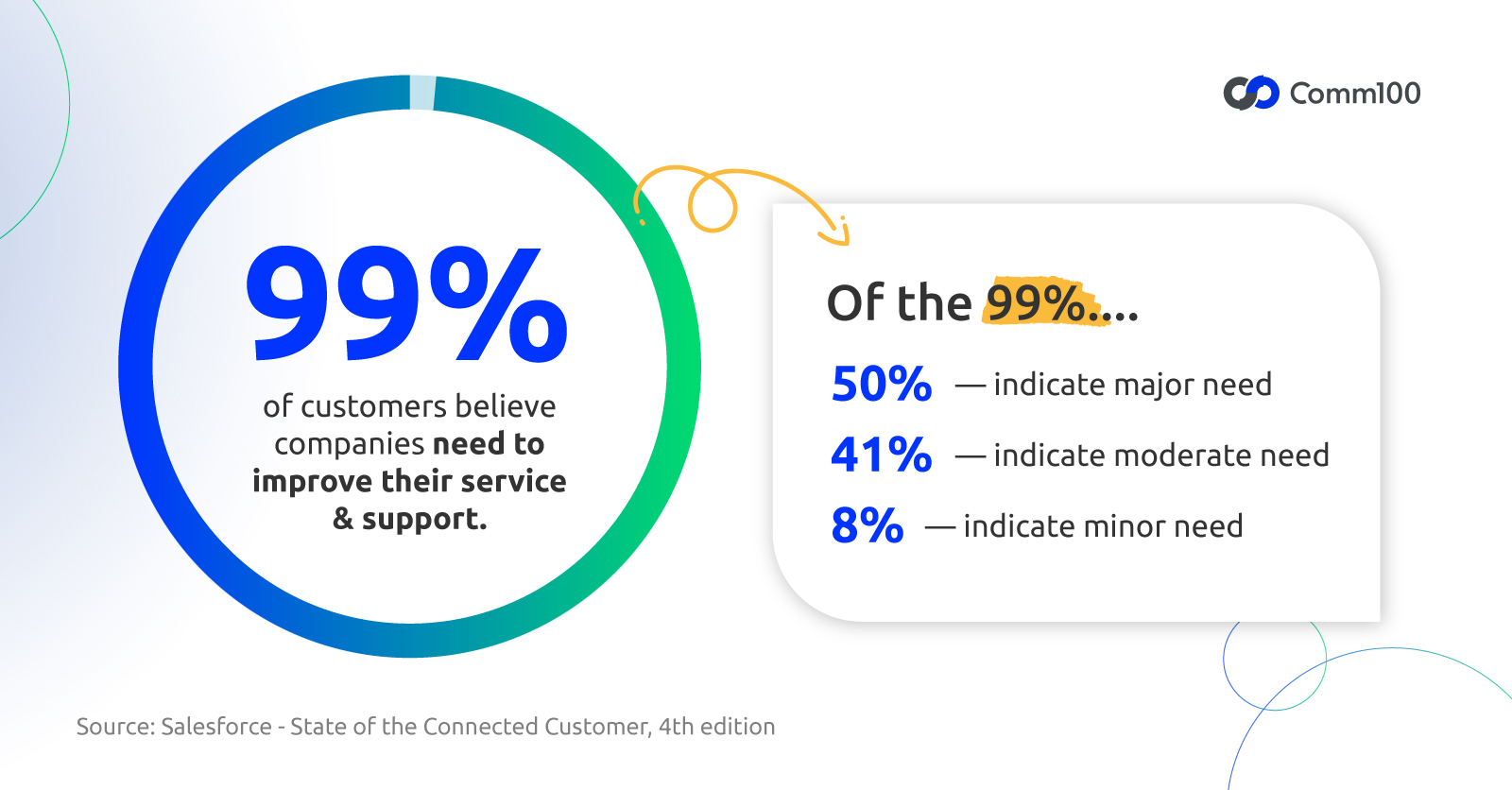

Understanding customer service trends is only one part of the equation. To improve customer service, organizations need to recognize the strengths of available technologies and develop a comprehensive strategy. By aligning organizational objectives and developing new ways to improve customer service, organizations can see major benefits to the bottom line.
We’ve noted that the benefits of positive customer experiences are well known, and data continues to back the value for organizations investing in customer service. 71% of customers have made purchase decisions based on the quality of customer service received. To dive deeper into how to improve customer service following recent trends, we’ll look at the top ideas for improving customer service that organizations are turning to today. Here are 5 tried and tested customer service improvement strategies.
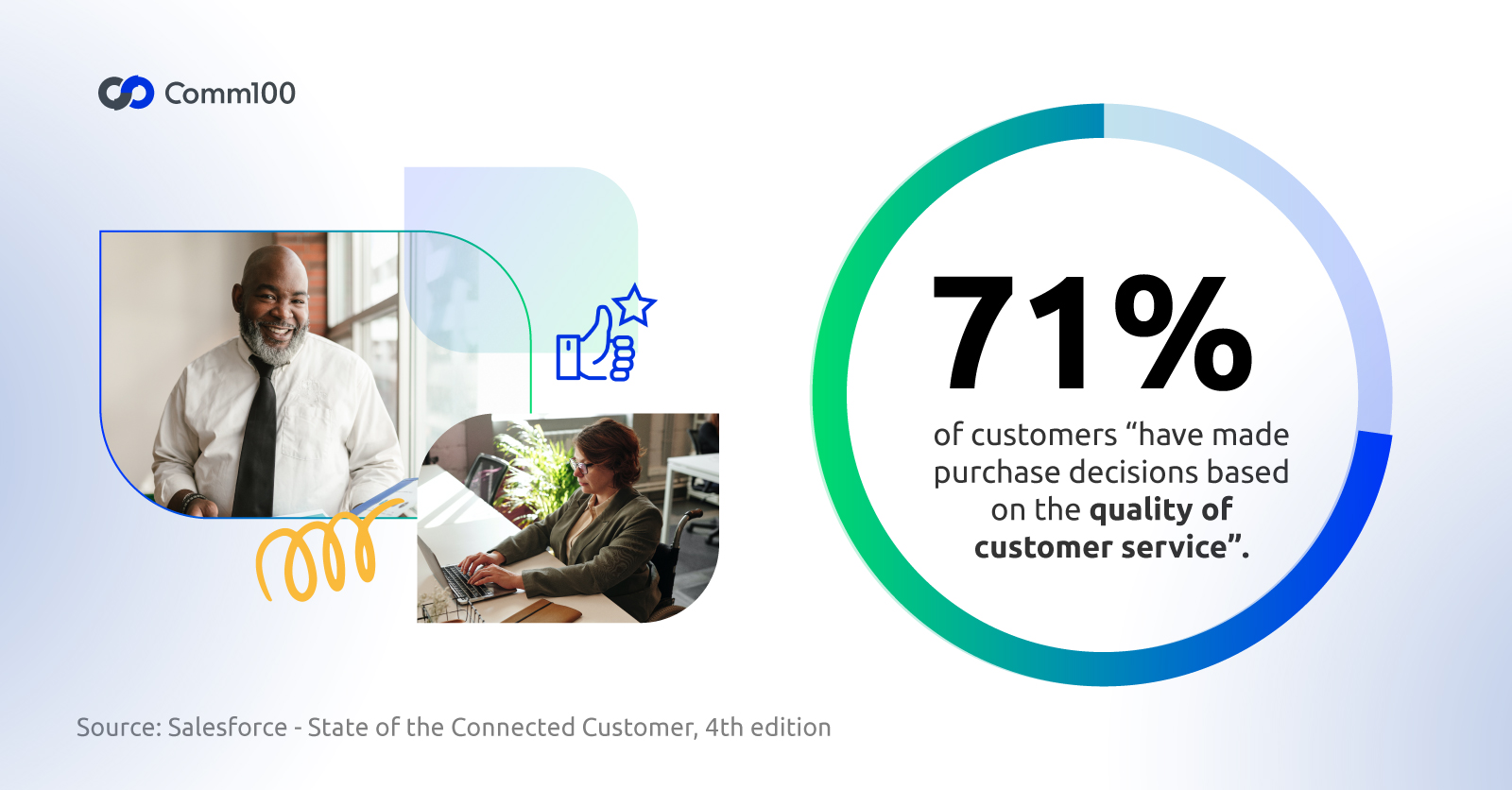
Today’s customers have come to expect immediacy from all their digital services, so it shouldn’t come as a surprise that these individuals now expect the same from organizations they interact with. One survey found that 90% of consumers now rate an immediate response as either “important” or “very important” when they need a customer service question answered.
To satisfy these demanding customers, organizations are turning to live chat. Live chat allows customers to connect with agents in real-time using a familiar chat interface, whether on a website or integrated within a mobile app. In addition to speed, live chat also brings convenience and personalization to customer service interactions.
The convenience of live chat starts with its digital nature. Everyone has made digital services a part of their lives, and it’s much easier now for customers to connect using digital services like live chat that provide a familiar chat interface. Live chat makes it easy for customers to connect with an agent, get the answers they need, and get on with their day.
Digital tools like live chat can also provide highly personalized experiences for customers thanks to the wealth of information provided to agents. 76% of those surveyed now expect personalized experiences, highlighting the need for organizations to introduce these technologies. With live chat, agents can know more about where their customers come from, what they need, and how to help. Overall, satisfaction among live chat interactions is exceptionally high, with an average live chat CSAT score of 4.3 in 2021.
More than just benefiting customers, live chat has major benefits for organizations as well. This includes bringing greater efficiency to customer service teams with built-in tools that can boost efficiency. Canned messages can be used by agents and teams to write establish responses to common questions that save time on typing and improve message consistency across the organization. Chat concurrency also allows agents to handle multiple chats at once, allowing agents to keep queues down and begin responding to customers as soon as possible.
The efficiencies of live chat also mean a high return on investment (ROI) for the technology. Compared to phone and other communications, live chat allows less agents to help more customers. Access our Live Chat ROI Calculator to learn how much your team can save by introducing live chat.
To learn more about how to improve customer service using live chat, you can explore live chat best practices in chapter 4.
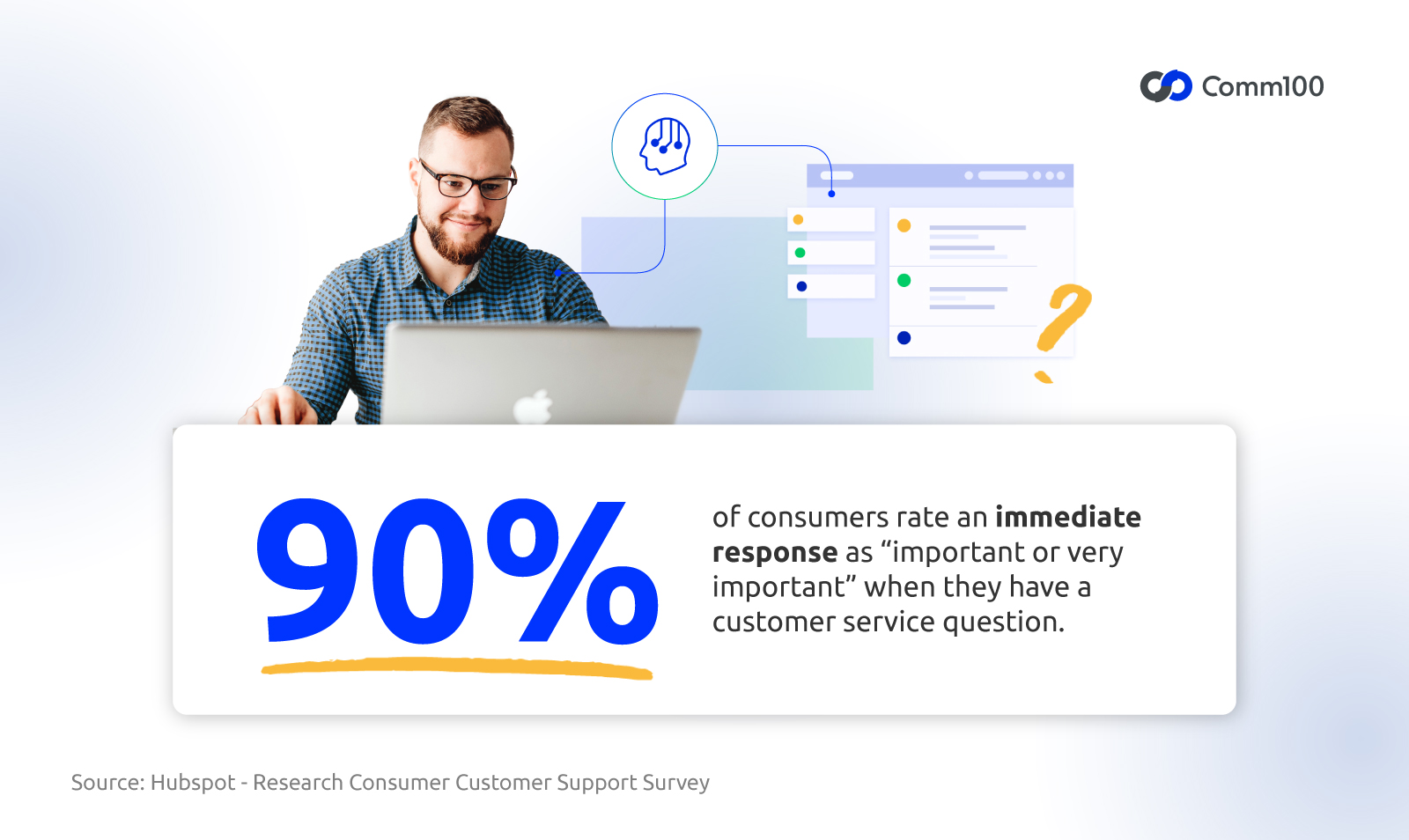
Bringing automation to customer service creates a variety of new opportunities for improvement. The primary way that organizations are introducing automation to customer service is with the adoption of chatbots.
A key benefit of chatbots is their ability to automate the repetitive but time-consuming work, allowing agents to focus on more complex or valuable tasks. Canadian Blood Services introduced Comm100 AI Chatbot with this goal:
“For us, the chatbot wasn’t launched to reduce agent headcount. It was launched so our agents can spend less time on simple queries, and more on the complicated and high-value queries.”
– Denny Michaud, Customer Relations Manager, Canadian Blood Services
With a bot handling the more basic inquiries, their agents could spend more of their time on more difficult queries, as well as sensitive questions that needed more attention and care.
In this way, chatbots also help organizations manage high volumes of support. A chatbot provides unlimited additional capacity, helping teams manage in peak periods. This improves the customer experience as it prevents wait times from soaring, but it also reduces costs as teams aren’t forced to hire more staff to handle the workload. Tangerine Telecom experienced this when they adopted Comm100 Chatbot. 84% of chats are resolved by the bot without human intervention. Some days, the number of chats resolved by Tangerine’s bot rose as high as 91%.
“The increase in our customer base was causing such a huge uplift in chat volume, we knew that we had to install a chatbot. The number of chat requests was simply too high for the number of agents we had, and expanding the team was too costly an option. If it had been left as it was, acceptance rates and wait times would have been seriously damaged, and complaints rife. And ultimately, we would have risked losing customers to competitors.”
– Richard Branson, COO of Tangerine
Chatbots aren’t only incredibly popular among agents and organizations. Customers too are increasingly willing to use chatbots. Already, 70% of customers are using or interested in using chatbots for simple customer service. For these customers, speed matters much more than the human touch that agents provide. They simply want to receive a quick answer to their question and move on. Only bots can provide this kind of support 24/7 in a cost-effective way.
With a rise in the number of digital communication channels, organizations are turning to omnichannel software to improve customer service operations for everyone involved. By consolidating every channel through a unified inbox, omnichannel platforms allow organizations to offer every channel that their customers want support on
And crucially, companies can offer all these channels efficiently, connectedly, and cost-effectively with omnichannel customer service platforms.
For customers, omnichannel means being able to reach out however they want, from any device. Data shows that 72% of consumers have used multiple methods of communication to start and complete a single transaction. Whether it’s with live chat, SMS, social media, or email, customers can reach out and receive the same great experience.
Providing excellent support across all channels is key because customers hate waiting for a response. In a survey by Interactive Intelligence Group, “a timely response” was identified as the most valued attribute in customer service. Another study found that 38% of consumers rated a single interaction resolution as the most important part of good digital customer service.
Speed in customer service matters the most to customers, and omnichannel helps achieve this. When agents have all of a customer’s information at their disposal, it naturally speeds up resolution time by eliminating the need to hunt for information or switch between platforms. Better yet, when customers switch channels, they don’t need to repeat their problem because the agent has full visibility into their previous conversation history, whatever the channel.
More than just past conversations, omnichannel platforms provide a full view of a customer’s history all in one place, giving agents a complete picture of the customer and their interactions with the organization. This includes basic customer demographic details such as geographic location and account information but can also reveal much more. For e-commerce sites, this can include purchase history or current shopping cart items. Access to customer navigation history can help agents understand where customers have come from, and what they’re most interested in.
Rather than switching windows, consoles, and even devices, omnichannel support means that agents don’t miss important details, or waste time searching multiple systems for customer information. This results in more efficient service as well as a better experience for the customer. It’s a win-win.
We know that customer service both builds new business and retains existing business, which makes service agents a significant part of brand identity and customer experience. With these things in mind, it makes sense that organizations should invest more in the agent experience to improve customer experience. Unfortunately, turnover rates for support agents remain in the 30-45% range.
To ease the burden on agents and reduce burnout and turnover, organizations should look to automation and modern tools that can reduce monotony for agents. With chatbots handling the majority of simple requests, agents can focus on the higher value and more complex interactions. Agents and customers can both appreciate this approach to customer service, as agents see more meaningful work, and customers have access to a human agent when needed. Although chatbots are ideal for the majority of basic requests, 85% of customers agree that “a human touch is needed, in addition to technology, for a positive customer experience.”
As with chatbots, introducing omnichannel support presents opportunities to improve the agent experience. When integrated with every digital channel, including resources like a knowledge base and CRM, omnichannel can put more information at an agent’s fingertips and reduce the monotony of continually searching for answers to common problems. Taking this idea even further Comm100 offers Agent Assist, which uses AI to deliver agents omnichannel insights as agents respond to customers. As an agent responds to a customer query agent assist monitors messages and then suggests answers from the knowledge base, provides canned messages, and more.
Read more: The Best Customer Experience Needs the Best Agent Experience – Expert Commentary
Customers and organizations both agree on the importance of personalized customer service. In a study conducted by EverString and Ascend2, 69% of companies surveyed rated personalizing the customer experience as their top priority. Likewise, a study by Epsilon and GBH Insights found 80% of consumers are more likely to make a purchase when offered a personalized experience. The advantages of personalized customer service are obvious, and thankfully providing customers a personalized experience today is easier than ever.
By introducing a digital omnichannel platform, customer service personalization is as simple as connecting every channel together. As customers reach out and connect using their preferred channel, all of their previous history and conversations are readily available to agents, allowing for personalized customer service based on their needs and preferences.
An omnichannel platform also enables advanced routing for even deeper personalization. With routing rules in place, as customers reach out to an organization, they’re automatically routed to the best agent or team to handle their request. This can be tailored to provide VIP experiences for key clients, geographic-based routing to ensure a positive experience to international customers, or dedicated teams or agents based on customizable criteria like department or skill level. For customers and organizations, the process is seamless and provides assurance that the organization understands the unique needs of the organization.
In the next chapter, we’ll explore some of the ways to improve customer service skills.

Besides introducing new channels for customers and tools for agents, improving the customer experience starts with knowing how to improve customer service skills. It’s important for agents to improve customer service skills, as we see that 78% of customers will forgive a company’s mistake after receiving excellent service. In this chapter, we’ll look at some of the tools available to service managers that can help guide agents and provide customers with an excellent experience.
It’s important to understand customer thoughts and attitudes on service provided, which is why surveys and polls can be so valuable to customer service teams. Positive surveys can validate current methods and highlight the things that currently work. They’re also a great social proof that can be used to demonstrate excellence to potential customers.
Negative reviews can help organizations to find the things in the process that aren’t currently working. This could include highlighting a need to introduce new channels, adjust policies, or highlight gaps in knowledge so that service managers can work on improving customer service skills across their teams.
In a live chat environment, surveys can be established post-chat to capture things like ratings and comments, or more defined metrics like a Net Promoter Score. With concrete data that can be pulled into reports, it’s much easier to highlight areas for improvement and develop plans that highlight how to improve customer service skills across teams.
Much like survey data collected directly from customers, site reviews in public spaces on the web like Yelp can allow businesses to see what the public are saying about their experiences. Improving customer service skills requires understanding all aspects of the customer journey, and in some cases, customers will choose a more public forum to share their experience than a direct survey.
Engagement in these spaces can help to shift public perception, so thanking customers for their feedback and responding to issues is important. In these situations, it may be possible to earn new business as prospective customers see that your organization is willing to listen and improve customer service skills.
Listening is an important skill for any agent and improving customer service skills should involve a review of active listening techniques. Active listening means taking the effort to not just hear what the customer is saying, but to understand their intents.
Top priorities in active listening are paying attention, providing feedback during the conversation, and showing engagement in what the speaker is saying. It’s important for agents to ask questions when necessary to flesh out the details of an experience, and to ask for clarification when details are unclear. It’s also important for agents to allow customers time to respond, and to wait patiently as they answer.
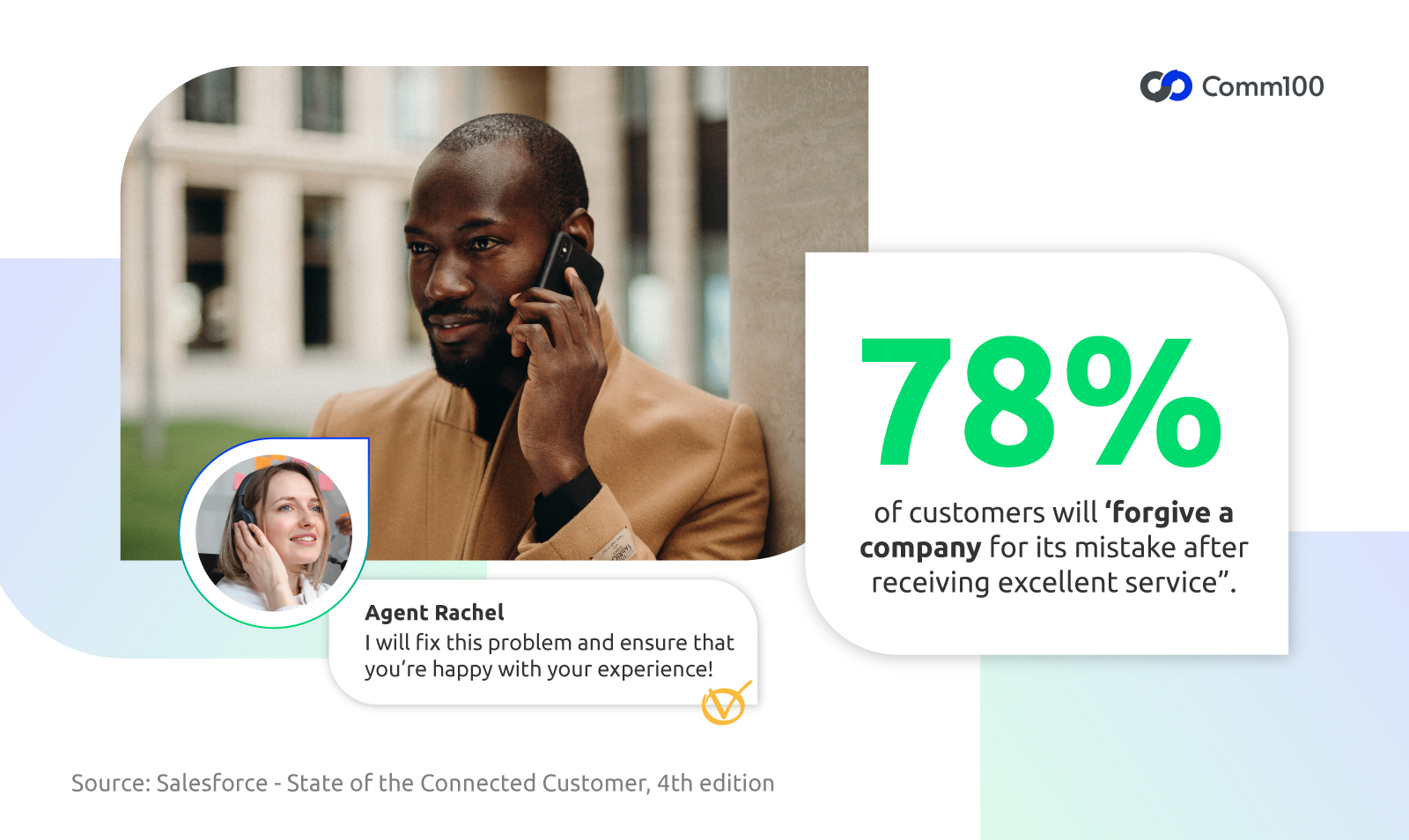

A digital omnichannel environment allows organizations to bring together every channel in one place, supporting each method that a customer may use for reaching out. When it comes to customer service best practices, however, each channel has attributes that make it unique. In this chapter, we’ll go channel by channel to look at the best customer service practices through each of the tools in the digital omnichannel toolbox.
Live chat best practices originate from both the way that a live chat environment is configured and the way that it’s used by agents. By coordinating the organizational approach and agent-specific training, it’s possible to provide customers with a truly exceptional experience. It’s no wonder that in 2021, live chat saw an 84% average positive rating.
Looking at live chat customer service best practices, it’s important to ensure that live chat is configured across your entire site to track visitors and understand which pages they’ve visited in real time. This open availability will also mean that customers are more likely to reach out when they need assistance. Some companies, however, may want to be more targeted with where live chat appears, depending on need.
One of the main reasons that live chat has remained so popular among customers is its speed. Compared to more lengthy phone waits, Comm100’s benchmark score for live chat wait times in 2021 was just 36 seconds. To achieve fast responses, agents should take advantage of all the tools available in live chat, including canned messages that can eliminate typing, sending rich media files when appropriate to avoid lengthy responses and clarify issues, and more.
With speed in mind, it’s also important to not rush complex interactions. By introducing a chatbot to a live chat environment, agents can spend more time with customers, knowing that the chatbot will handle the simple cases. In 2021, the average live chat duration was 11 minutes and 9 seconds, owing to the care agents took with customers.
Finally in live chat support best practices, it’s important to build a mobile-friendly live chat. On the Comm100 platform, 63% of total live chats were taken on mobile devices in 2021. To cater to these mobile users, organizations should ensure a responsive design, and look to potentially introduce an in-app chat where mobile apps are supported. Selecting a live chat like Comm100 with a developer-friendly SDK will ensure that creating mobile live chat options is easy.
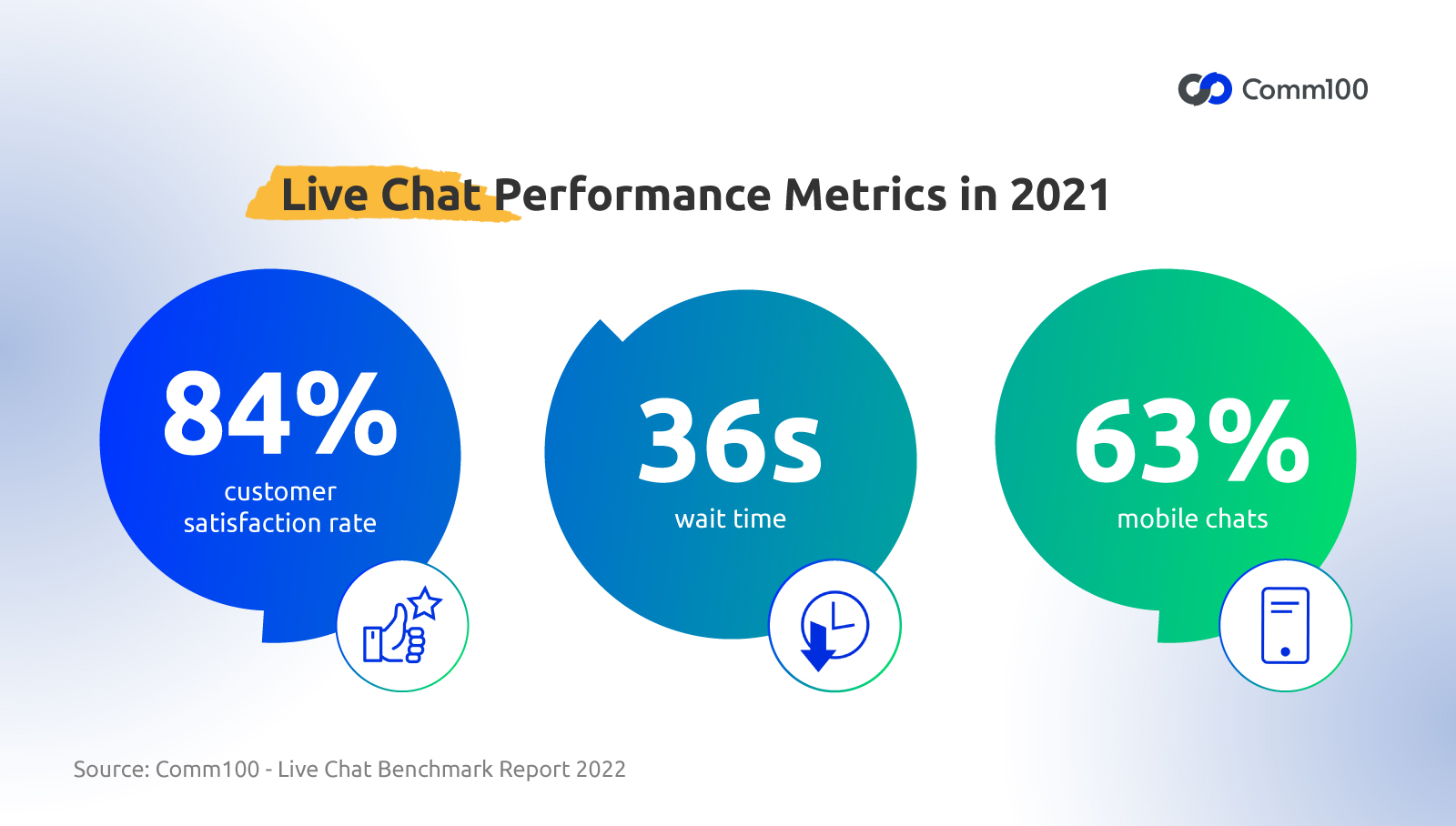
Email is an important piece of any customer service team’s repertoire. When it comes to customer service email best practices, the first consideration should be to reduce the total number of emails to customers whenever possible. According to the Harvard Business Review, 2.4 business emails are needed on average to resolve an issue. If email customer service best practices aren’t followed, that can mean a lot of back and forth with customers, potentially wasting their time and the organization’s.
Introducing a Service Level Agreement (SLA) for agents to follow can help set goals across the team and clarify which tickets are worked first, how and when they’re responded to, and more. Introducing email ticketing allows service managers to understand how their team is performing, and agents to understand their responsibilities.
Email ticketing allows agents to follow customer service email best practices, with established response times, resolution times, and more. With tagging and filtering tools, support teams can establish systems for sorting emails by type, channel, or any other criteria, and then sort and prioritize as needed. This process can also be handled by automatic routing tools, distributing email tickets evenly among agents or based on agent experience, geographic location, or other criteria.
Social media is a growing part of how customers interact with businesses. 67% of consumers have already used social media for service-related needs, and 70% of people expect to message businesses more for customer service questions in the future. Because of the always-on nature of social media, it also comes with high expectations from customers. 40% of consumers expect a response from brands in the first hour, while 79% expect a response in the first 24 hours.
As with email, social media customer service best practices start with introducing SLAs and ticketing to enforce targets across support teams. This can help to ensure that messages are not missed and responses are swift. Unlike other social channels, the public nature of social media means that upset customers may take out their frustration in a public way, hurting brand image and turning away potential customers. 45% of customers say that they share bad customer service experiences via social media.
Organizations need to be aware that customer interactions on social media have the potential to reveal sensitive customer information or highlight negative experiences. An important aspect of social media customer support best practices includes shifting customers to other, more private, channels when appropriate. If connected to an omnichannel platform, organizations can easily handle the transfer of customers to DMs without missing any context. Other requests needing billing information may be better served on email or another platform entirely.
The last channel that we’ll look at is SMS. This is a growing channel that is still underutilized by many organizations. 64% of customers believe that business should send text messages more often. These customers want to communicate with businesses using SMS, and businesses need to pay attention. Compared to other channels, SMS sees incredibly high engagement from customers. These messages have an open rate of 98%, and people are more than four times more likely to reply to SMS compared to email.
In terms of customer service best practices for SMS, organizations should take advantage of the unique nature of SMS to send push notifications. Because we know that nearly all text messages are read, SMS is an ideal channel for alerting customers to key dates and appointments. Businesses can also boost promotions by using SMS for targeted advertising to existing customers.
By introducing an omnichannel platform, organizations can also treat SMS just like any other support channel. With ticketing for SMS, cases can be created and assigned just like your other digital channels, and inquiries can be tracked to enforce SLAs.

As we close out our look at customer service practices, in our last chapter we’ll provide an overview of the best customer service software available. Every organization’s criteria for top customer service software will be unique, so here we’ll simply highlight each product and some of their key use cases to help you begin your research.
Headquartered: Vancouver, British Columbia, Canada
Founded: 2009
Comm100 is a global provider of digital omnichannel customer engagement software for education, government and commercial organizations of all sizes. With Comm100, organizations can provide excellent digital customer experiences through configurable, value-driven live chat, secure messaging, AI powered bots and automation within one integrated console. Comm100 is powered by zero downtime, the highest standards in security, and AI automation, ensuring customers get answers anytime, anywhere.
Headquartered: Cambridge, Massachusetts, United States
Founded: 2006
HubSpot designs customer support software designed to help companies grow. Their Service Hub software helps to build customer relationships while driving efficiency. Service Hub is designed to be easy to use and connect with HubSpot’s CRM platform to provide more authentic service that puts the customer first. Features include ticket automation and custom dashboards.
Headquartered: San Francisco, California, United States
Founded: 2011
Intercom, the Engagement OS, provides an omnichannel customer service platform that enables stronger customer relationships while driving growth. Their solutions are built for sales, marketing, and support teams to work together and engage customers throughout their journey. This focus on the big picture means that Intercom is best for organizations looking to track the entire customer lifecycle.
Headquartered: San Francisco, California, United States
Founded: 1999
Salesforce Service Cloud is customer service software built around AI-powered workflows and automation, and promises personalized service across every touchpoint. Service Cloud was based around Salesforce’s popular Sales Cloud, making it essentially a CRM designed around customer service and support. This tool can be used to support interactions on any channel and provide insights from customer interactions.
Headquartered: San Francisco, California, United States
Founded: 2007
Zendesk builds software to meet customer needs and encourage team success. This omnichannel platform provides support that flows across channels and can facilitate both support and sales. By following the buying journey, it facilitates driving qualified leads to close deals.
Headquartered: Mathalamparai, Tenkasi, India
Founded: 1996
Zoho Desk is a multinational business based out of India providing omnichannel customer service software that is used by 50,000 business around the world. Zoho Desk is designed to improve agent productivity while building loyalty through improved customer happiness. Capabilities include workflow automations, artificial intelligence, and APIs to connect your other tools.
With so many opportunities to improve the customer experience, it can be difficult for organizations to know where to begin. To see how Comm100’s customer engagement software can support your customers, book a personalized demo with Comm100 today.
There’s a lot more where this came from!
Get our monthly customer service news and best practices update delivered to your inbox.

Article by
Kate is the Content Marketing Specialist at Comm100. She has extensive experience in content creation for technology companies across the world, including the UK, Australia and Canada. She specializes in B2B messaging, branding and soccer trivia.